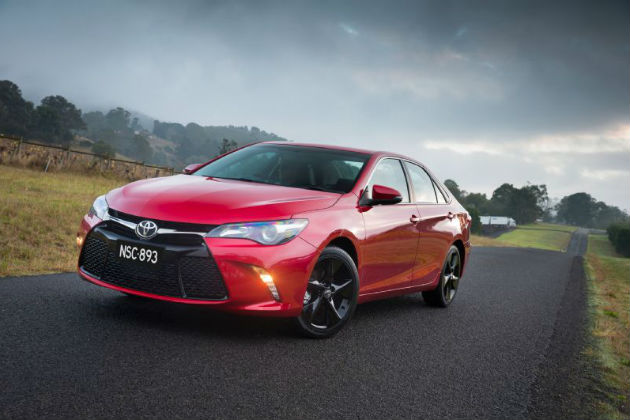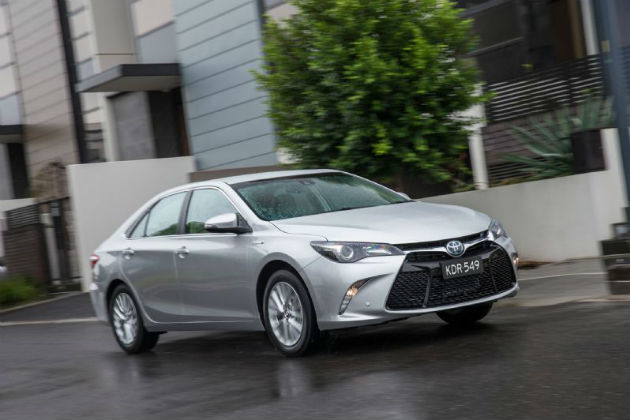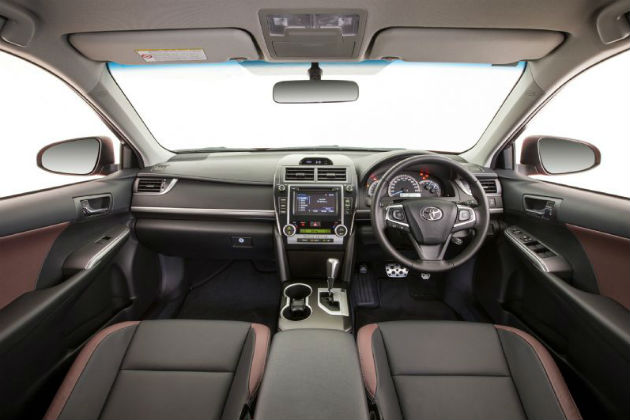5 November, 2015 By: Alex Forrest
You won’t believe it, but the Toyota Camry is very special and I’m going to tell you why.
It’s special because no other car has copped as much flak for simply being very good at the job it was designed to do.
It’s cheap to run, it blends in and says nothing about the personality of the driver except that they probably work in sales.

The car itself though, is as reliable as sunrise, very affordable, roomy, easy on fuel and has the resale value of a gold bar.
All of that has been applicable to Toyota Camrys for the last 400 years.
This latest Camry though, has deviated slightly from that path. It has an edgy, guppy-mouthed front end designed to make it look more planted on the road, a longer and wider body and a newly designed bonnet.
In fact, the only panel carried over from the previous model is the roof.
Also, the top of the range Atara SX variants even get blacked-out wheels, just like the cool kids in their modified sports cars.
The Camry was never born to be wild, but there’s evidence here it might be about undo its top button and try its first white wine spritzer.

Appearance aside, the new Camry (launched in May 2015) has also brought with it some major price reductions.
The entry level Altise variant is down from $30,490 plus on roads in the previous model, to $26,490 in the current one.
The Camry Hybrid has gone from $34,990 for the previous model, down to $30,490 for the new one. That also makes the Camry Hybrid $2,000 cheaper than the considerably smaller Prius.
However, while the Camry is cheaper than some of its competitors like the Mazda6 and Ford Mondeo, make sure you check the spec sheets for the variants you’re comparing.
Price cuts like this can also bring equipment deficits, and the more expensive alternatives may also have items like sat nav and front parking sensors where the Camry may not.
Inside, there are still acres of leg room for rear passengers. In the Camry Hybrid, boot space still suffers some intrusion from the battery.

The positive trade-off here is not just incredibly low fuel consumption for a car this size (5.2 litres/100km in the official ADR test), but surprisingly sprightly performance thanks to the 151kW produced by the combined efforts of the petrol and electric power plants. With the help of the electric motor, it feels much more composed under acceleration compared with other mid-sizers which only have a naturally aspirated petrol engine.
Compared with the old model, we found that in moderate traffic, the new Camry Hybrid could also spend more time running in electric mode before the petrol engine starts.
Still under the skin, Toyota says the steering rack ratio in the new Camry is slightly faster (six per cent) and suspension damping has also been revised to improve roll stiffness but still retain an acceptable ride over corrugations.
This will be the last Toyota Camry made in Australia and that’s a pity, because in many ways, it also contradicts many of the clichés about Camrys and white bread blandness.
It’s bigger, its pricing has been cut, it drives better (but isn’t the best in class), and its edgy styling isn’t for everyone.
None of those are bad things.
| Price driveaway (as tested): |
$32,990 |
|---|---|
| Engine: | 2.5-litre four-cylinder petrol/electric hybrid |
| Power: | 118kW @ 5700rpm (petrol); 151kW (combined) |
| Torque: | 213Nm @ 4500rpm (petrol) |
| Claimed fuel economy: | 5.2L/100km |
| ANCAP Rating: | 5 stars |
| CO2 Emissions: | 121g/km |
